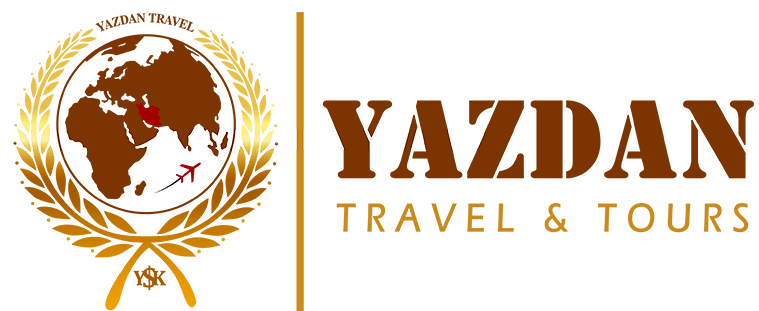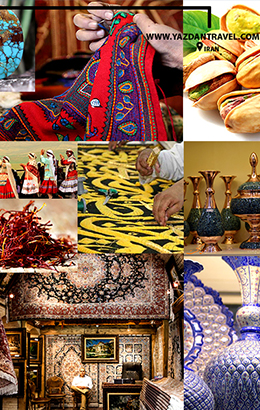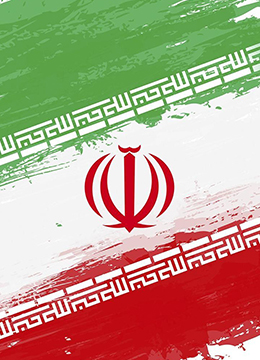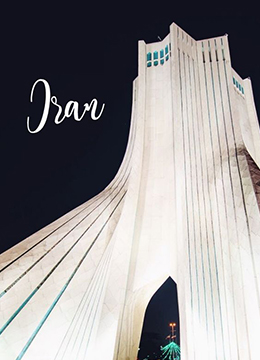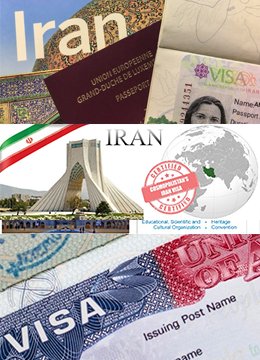Iranian Souvenirs
Iranian Souvenirs:
Walking through the Bazaars of Iran, is like attending a festival of colors and scents. Depends on the city you visit, you can find a wide range of souvenirs from Spices to Sweets, to Nuts, to Handmade Cloths, to Handicrafts, etc. to buy.
Some of the most famous and popular Iranian souvenirs are as follow:
1. Saffron; is a spice derived from the flower of Crocus Sativus. The vivid crimson stigmas and styles, called threads, are collected and dried to be used mainly as a seasoning and coloring agent in food. The origin of this expensive flavor is Iran, which accounts for approximately 90% of the world’s production of Saffron that can be found in best quality in the city of Mashhad. Along with Saffron, one can find other spices and seasons such as Cardamom, Cumin, Basil, Mint, Cinnamon, etc. in Iran to make food and desserts tastier.
2. Rose-Water (Golab) & other Herbal Essences: Rose-Water is a flavored water made by steeping a special kind of rose petals in water; used to flavor food, as a component in some cosmetic & medical preparations, and for religious purpose in Europe and Asia. Kashan is where exactly one can find the finest Rose-Water & other Herbal Essences all around the world.

Iranian Souvenirs
3. Caviar; Iranian Caviar needs no definition or description, as it is the best in the world from the Caspian Sea.
4. Iranian Carpet; just like Iranian Caviar, Iranian handmade carpet is worldly famous and known with a variety in pattern and style and color depends on the city it was made in. Carpets were made in Tabriz, Kerman, Kashan are known as the best ones.
5. Sweets & Nuts: Those who have a sweet tooth will feel an absolute need to bring back some Sohan from Qom, or Gaz from Isfahan, or Baklava from Yazd, or the best Pistachio in the world, etc.
6 . Mina Kari: Once you visit Isfahan, you realize that the city is concerned with aesthetic beauty, so it’s no wonder that many handicrafts come from there. Mina Kari (enamel work) is decorating the surface of copper containers in a traditional style with a fine-haired brush. Miniature birds and floral patterns on a background which is most commonly azure, although green and red can also be found; comes in plates, vases, chalices and other decorative items.
. Mina Kari: Once you visit Isfahan, you realize that the city is concerned with aesthetic beauty, so it’s no wonder that many handicrafts come from there. Mina Kari (enamel work) is decorating the surface of copper containers in a traditional style with a fine-haired brush. Miniature birds and floral patterns on a background which is most commonly azure, although green and red can also be found; comes in plates, vases, chalices and other decorative items.
7. Khatam Kari: Khatam Kari is one of the Persian arts of marquetry wherein the surface of wooden or metallic articles is decorated with pieces of wood, bone and metal cut in a variety of shapes and designs. Materials used in this craft can be gold, silver, brass, aluminum and twisted wire. Various types of inlaid articles and their quality are known by the size and geometrical designs. Smaller pieces result in a higher value of the artwork. Many objects can be decorated in this fashion, including jewelry boxes, chessboards, pipes, desks, frames or musical instruments. The ornamentation of the doors of holy places predominantly consists of inlaid motifs. These specimens can be observed in the cities of Mashhad, Qom, Shiraz and Rey. In the Safavid era, the art of marquetry flourished in the southern cities of Iran, especially in Isfahan, Shiraz and Kerman.
8. Ghalam-zani: Engraving (Ghalam-zani) is a term, for artistic metalworking, by hammering gold, silver, copper (or other materials), engraving, Repoussé and chasing to form minute detailed reliefs or small engraved patterns. Art engraving has a long history in Iran back to more than several thousand years ago. Isfahan is the main center for engraving.
9. Handmade Cloths: Ghalamkâri is the traditional textile printing of Isfahan which uses wooden stamps to press floral, geometric, and arabesque patterns into cotton cloths. Native to Kerman is Pateh, a naturally dyed, hand-stitched decorative cloth made of wool. Yazd is famous for its Termeh, a luxurious, hand-woven silk fabric with fine threads of gold woven in. Termeh in particular is also made into different forms such as purses, shoes, tablecloths, and jewelry pouches.
Ghorbani,2/23/2019
